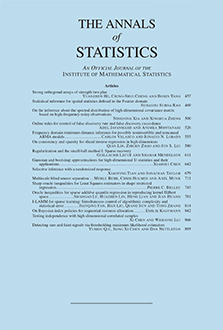Abstract
Tie-breaker designs trade off a measure of statistical efficiency against a short-term gain from preferentially assigning a binary treatment to subjects with higher values of a running variable x. The efficiency measure can be any continuous function of the expected information matrix in a two-line regression model. The short-term gain is expressed as the covariance between the running variable and the treatment indicator. We investigate how to choose design functions specifying the probability of treating a subject with running variable x in order to optimize these competing objectives, under external constraints on the number of subjects receiving treatment. Our results include sharp existence and uniqueness guarantees, while accommodating the ethically appealing requirement that be nondecreasing in x. Under this condition, there is always an optimal treatment probability function that is constant on the sets and for some threshold t and generally discontinuous at . When the running variable distribution is not symmetric or the fraction of subjects receiving the treatment is not , our optimal designs improve upon a D-optimality objective without sacrificing short-term gain, compared to a typical three-level tie-breaker design that fixes treatment probabilities at 0, and 1. We illustrate our optimal designs with data from Head Start, an early childhood government intervention program.
Funding Statement
This work was supported by the U.S. National Science Foundation under grants IIS-1837931 and DMS-2152780.
Acknowledgments
The authors would like to thank Kevin Guo, Dan Kluger, Tim Morrison and several anonymous reviewers for helpful comments.
Citation
Harrison H. Li. Art B. Owen. "A general characterization of optimal tie-breaker designs." Ann. Statist. 51 (3) 1030 - 1057, June 2023. https://doi.org/10.1214/23-AOS2275
Information





